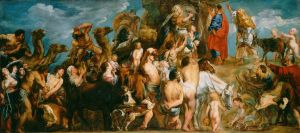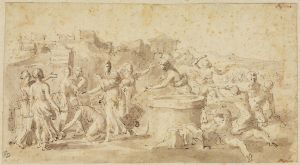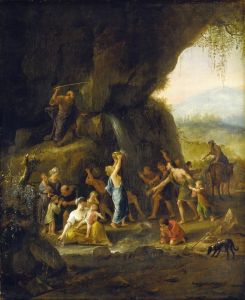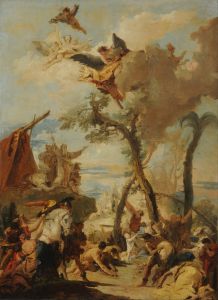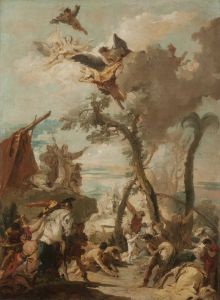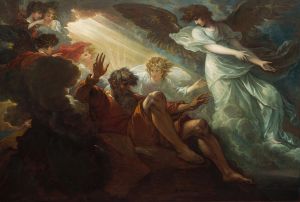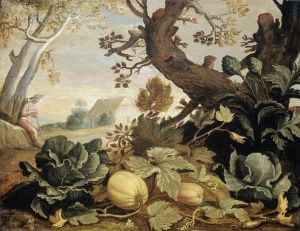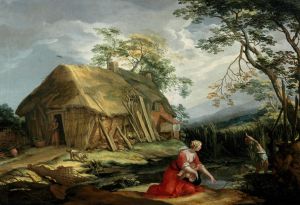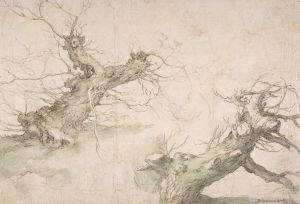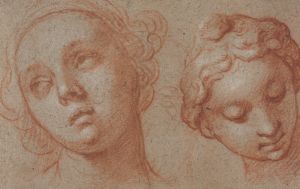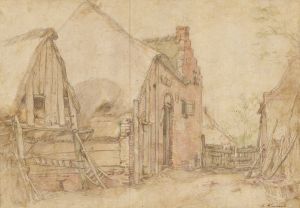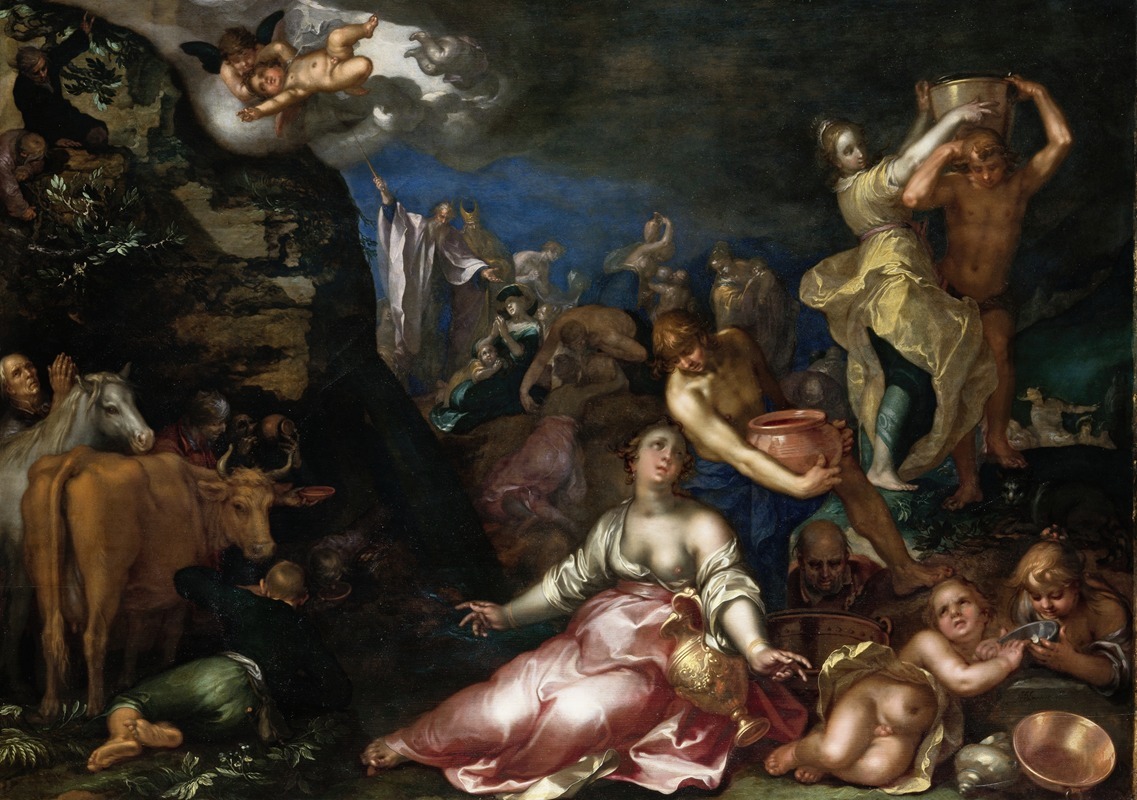
Moses Striking the Rock
A hand-painted replica of Abraham Bloemaert’s masterpiece Moses Striking the Rock, meticulously crafted by professional artists to capture the true essence of the original. Each piece is created with museum-quality canvas and rare mineral pigments, carefully painted by experienced artists with delicate brushstrokes and rich, layered colors to perfectly recreate the texture of the original artwork. Unlike machine-printed reproductions, this hand-painted version brings the painting to life, infused with the artist’s emotions and skill in every stroke. Whether for personal collection or home decoration, it instantly elevates the artistic atmosphere of any space.
"Moses Striking the Rock" is a painting by the Dutch artist Abraham Bloemaert, created in the early 17th century. Bloemaert, born in 1566 and died in 1651, was a prominent figure in the Dutch Golden Age of painting. He was known for his versatility, working in various styles and subjects, including religious themes, which were highly popular during his time.
The painting depicts a biblical scene from the Old Testament, specifically from the Book of Exodus (Exodus 17:1-7). In this narrative, the Israelites, led by Moses, are wandering in the desert after their exodus from Egypt. They find themselves in a dire situation, suffering from a lack of water. The people complain to Moses, fearing for their lives and questioning why they were brought out of Egypt only to die of thirst in the wilderness. In response, Moses turns to God for help. God instructs Moses to strike a rock with his staff, and when he does so, water miraculously flows out, providing the Israelites with the much-needed sustenance.
Bloemaert's interpretation of this scene captures the moment of divine intervention and relief. The composition typically features Moses at the center, striking the rock with his staff, while water gushes forth. The surrounding figures, representing the Israelites, are depicted in various states of desperation and relief as they gather to drink the water. Bloemaert's use of light and shadow, as well as his attention to detail, enhances the dramatic effect of the scene, emphasizing the miraculous nature of the event.
The painting showcases Bloemaert's skill in rendering human figures and expressions, as well as his ability to convey a narrative through visual art. His work often combined elements of Mannerism, with its elongated forms and dynamic compositions, and the emerging Baroque style, characterized by its emphasis on movement and emotional intensity.
"Moses Striking the Rock" is an example of Bloemaert's religious works, which were commissioned by both Catholic and Protestant patrons. Despite the religious conflicts of the time, Bloemaert managed to navigate the artistic demands of both groups, producing works that were appreciated for their technical mastery and devotional content.
The painting is part of Bloemaert's broader oeuvre, which includes a variety of subjects such as mythological scenes, landscapes, and portraits. His influence extended beyond his own works, as he was also a respected teacher. Among his notable students were artists like Gerrit van Honthorst and Hendrick Terbrugghen, who went on to become significant figures in their own right.
"Moses Striking the Rock" remains an important piece within the context of Dutch Golden Age painting, reflecting the era's artistic trends and the enduring appeal of biblical themes. Bloemaert's ability to convey complex narratives through his art continues to be appreciated by art historians and enthusiasts alike.





